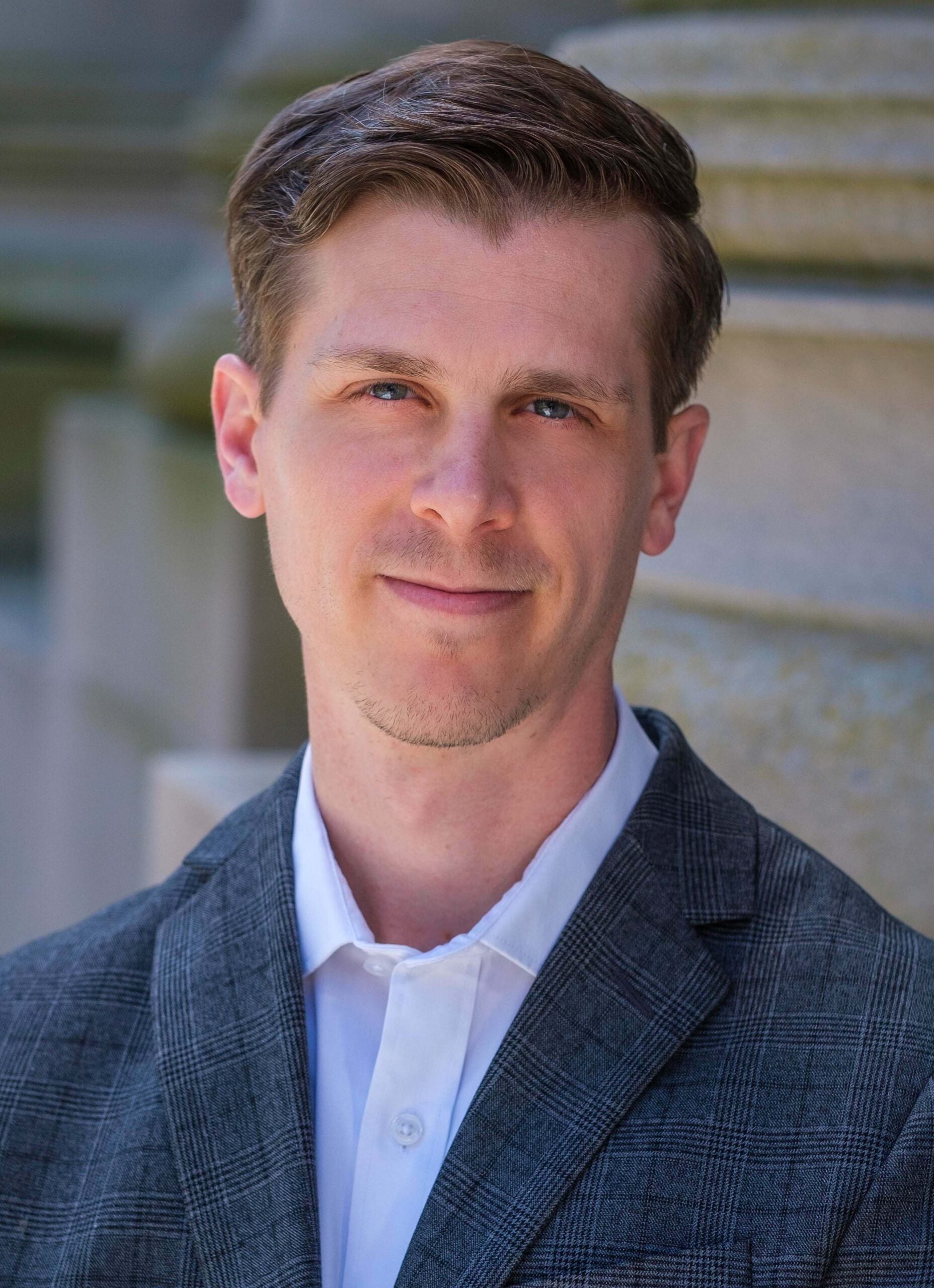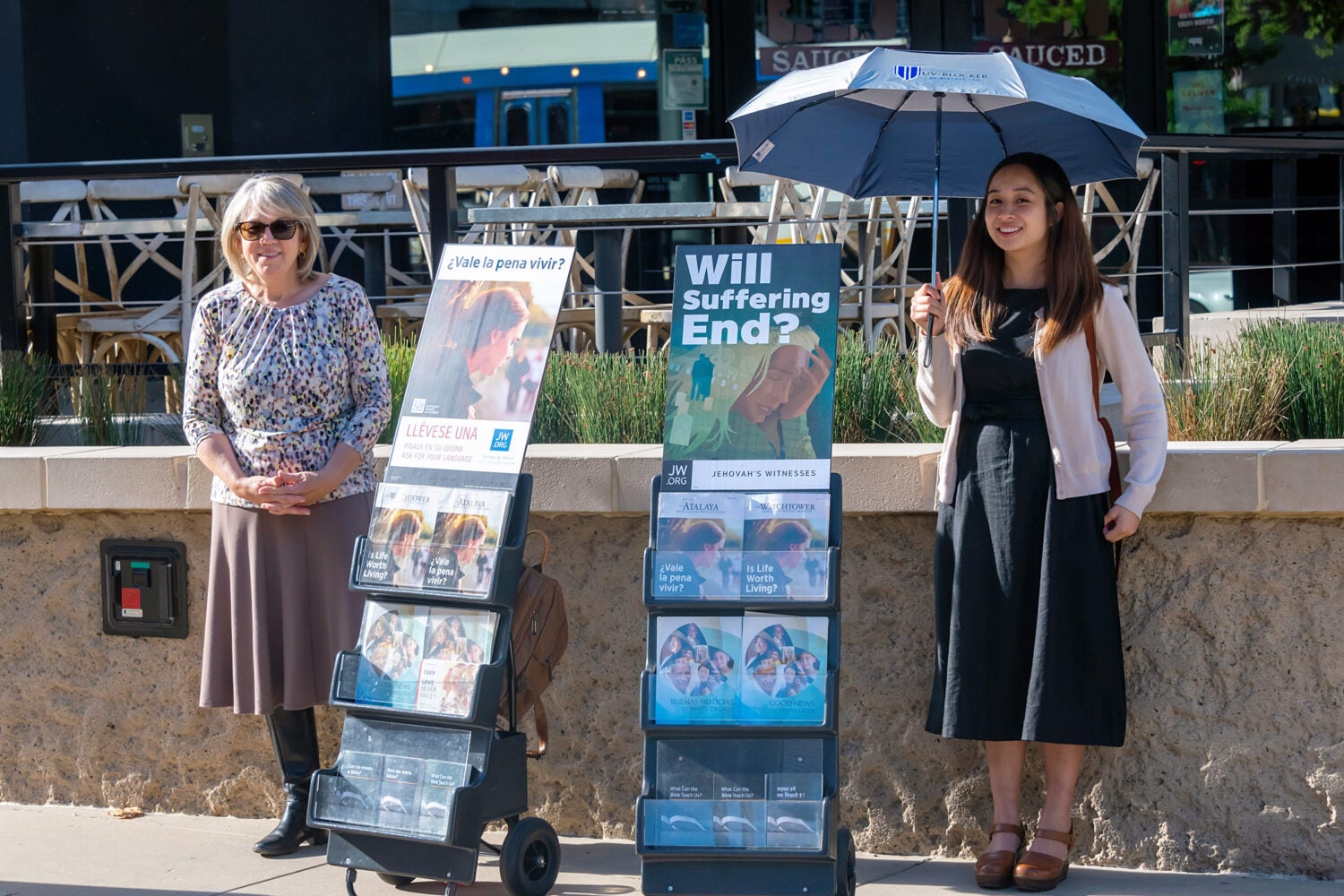Each morning, at many public schools across the United States, students are invited to stand and recite the Pledge of Allegiance while saluting the American flag. And each morning, since 1943, participating in this ritual is completely optional, thanks to the Supreme Court, which held that year in West Virginia State Board of Education v. Barnette that schools cannot punish those who abstain from the tradition.
The plaintiff and his family members in that case were Jehovah’s Witnesses who opposed the pledge and flag salute on religious grounds. But crucially, the ruling they long fought for and won applied not just to religious objectors — it applied to everyone, says Josh McDaniel, an assistant clinical professor of law and faculty director of Harvard Law School’s Religious Freedom Clinic.
In a forthcoming paper for Washington & Lee Law Review, McDaniel argues that the Barnette case is just one example of a rich history of faith-based communities harnessing the legal system to strengthen constitutional rights in the U.S., even beyond the religious protections afforded by the First Amendment.
McDaniel contends that religious minorities — and Jehovah’s Witnesses in particular — have helped secure for all Americans what are traditionally considered secular guarantees, such as freedom of speech and the press, and even equal protection under the law. In an interview with Harvard Law Today, McDaniel explains how the faithful have pushed the Court to protect “nonreligious” rights, and which cases we should be paying attention to today.

Harvard Law Today: What gave you the idea for this paper?
Josh McDaniel: A few years ago, I was invited to participate in a webinar commemorating the 20th anniversary of a Supreme Court decision called Watchtower Bible & Tract Society of New York, Inc. v. Village of Stratton. This case is not as well known as some others the Jehovah’s Witnesses have brought over the last 100 years — and there have been dozens that have reached the Supreme Court. Stratton — the most recent of those heard by the Court — involves the issue of door-to-door speech. The question was, can a town require you to get a permit before you can go door-to-door for whatever purpose — for the Jehovah’s Witnesses, it was to proselytize.
When I started thinking about that case, it became pretty clear that it was not just about religious proselytizers. The Supreme Court’s decision protecting the Witnesses was not issued on the free exercise clause, but on the free speech clause, and as a result, its decision protects everyone ranging from political canvassers to student activists to Girl Scouts wanting to sell cookies. It sparked my interest in understanding more about how religious litigants secure secular protections.
HLT: How do some of the guarantees contained in the Bill of Rights intersect with the practice of religion, beyond the First Amendment’s free exercise and establishment clauses, which promise to restrain the government from both interfering with an individual’s right to practice or endorsing a particular religion?
McDaniel: In the paper, I walk through how you can trace much of the Bill of Rights to historical episodes involving religious actors who were suppressed for their religious speech or their religious activity. And we notice this in cases we litigate in the clinic even today. One example is a street preacher arrested for sharing the gospel in a public area — you have a free speech claim. We’ve represented a Jewish group that had its religious property seized by eminent domain — that involves a takings clause claim. And we’ve even filed briefs in cases raising Fourth Amendment issues to explain to the courts how something like warrantless government surveillance of homes or buildings has historically been turned against mosques and other houses of worship.
HLT: You argue that while the Fourteenth Amendment was primarily passed to protect the rights of Black citizens following the Civil War and the end of slavery, it also helped secure rights for religious minorities, including Black Americans. How so?
McDaniel: The Fourteenth Amendment was obviously motivated to protect Black citizens in the wake of the Civil War, but it was also motivated by the need to protect against the suppression of religious speech. It was designed to curb state suppression — to provide Bill of Rights protections to new Black citizens and those advocating for them, including clergy and religious publishers. A lot of southern regimes criminalized distributing incendiary abolitionist tracts and destroyed religious presses and sought to restrict Black religious assemblies.
HLT: You also make a connection between the cases securing rights for Jehovah’s Witnesses in the 1930s and 40s and the Civil Rights Movement. Can you tell me more about this link?
McDaniel: It took more than a half century for the Fourteenth Amendment protections to be enforced by the Supreme Court, but when it did, the Court often did so in response to cases brought by Jehovah’s Witnesses in the 1930s and 40s. So many of our bedrock secular constitutional freedoms came from Witnesses who were prosecuted for breaching the peace or demonstrating or assembling or petitioning. Fast forward again a couple of decades to the Civil Rights Movement, and you see state and local governments weaponizing precisely the same kinds of laws and ordinances against the activists that they had with the Witnesses. Several of those cases also go to the Supreme Court. And in case after case, the Court principally relies on the Witness cases as key precedents for vindicating the rights of Black civil rights activists. You see it coming full circle — where these rights first secured to protect Black citizens in the wake of the Civil War then protect Jehovah’s Witnesses, and then again protect Black citizens struggling for their civil rights.
HLT: Why have religious litigants — and Jehovah’s Witnesses in particular — found success with invoking secular rights alongside religious ones in their lawsuits?
McDaniel: I think at first the reason might have been that religious freedom protections like the Free Exercise Clause weren’t really developed doctrinally to the point of having a strong framework for protecting religious actors, whereas the Free Speech Clause was somewhat more fleshed out and provided that framework. I think there was also an attractiveness for judges to rule for religious litigants on secular grounds. As a result of that, the victories weren’t just benefiting Witnesses or religious people but benefited everybody.
HLT: Why might religious litigants be particularly well-situated as plaintiffs to help maintain what we think of as secular rights?
McDaniel: In my view, it’s partly the nature of religious faith. As the Witness cases of the 1930s and 40s illustrate, faith often compels visible, unpopular speech in public places, and because Witnesses viewed public preaching and publishing as a religious duty, not just a preference or something they like to do, they didn’t back down. Quite to the contrary, they showed up in parks, on sidewalks, at doorsteps, and their outsider status invited attempts to silence them, which created this dynamic that repeatedly created these cases that pressure-tested speech, press, assembly, and petition doctrines for everyone.
HLT: Is there a risk that in framing religious disputes in secular terms, it could dilute the distinctiveness of religious freedom protections?
McDaniel: I think it depends. I would argue for calibration when the government burdens activity that is both religiously motivated and clearly protected by secular rights. For example, the door-to-door advocacy issue in the Stratton case — ruling on free speech or other secular grounds can avoid special treatment critiques, and extend protections broadly, which is a great thing, and it can even turn down the temperature on some of these hotly contested religious freedom disputes. But we still need distinct Free Exercise law for problems that are unique to religion — think Sabbath accommodations, sacramental uses, internal church disputes. So, the choice of framing should turn on the underlying harm and whether a general rule can do the work. The Stratton case I mentioned earlier shows how speech holdings can lift all boats without sidelining religion’s distinct claims.
HLT: What cases — in your clinic or elsewhere — should we be watching that involve religious litigants but nonetheless could have an impact on secular rights in the future?
McDaniel: They come up from time to time. The Supreme Court recently granted certiorari in a case our clinic had filed an amicus brief in support of, where the plaintiff is a Christian street preacher. But he’s raising a free speech issue, challenging what’s known as the Heck bar (or doctrine). Essentially, in that case, he had been fined for preaching on the streets, and had paid the fine, and later wanted to bring an injunctive relief claim to challenge the ordinance. He was barred from doing so by this Heck doctrine, which says that, because you were already prosecuted for this, you can’t bring a civil rights lawsuit without first getting that original offense set aside. But because it was only a fine, what that means is that he’s forever barred from bringing a constitutional claim against the ordinance in this case.
The Heck doctrine is something that applies to prisoners in habeas contexts and to virtually anyone who’s exercising their constitutional rights in any context, so victory for him would have a wider impact. It’s an example of a religiously motivated actor trying to set the law straight, hopefully for the benefit of everybody.
Want to stay up to date with Harvard Law Today? Sign up for our weekly newsletter.
